Eating & Sipping in France
Beaujolais
Most of the following day was spent touring the Beaujolais region. It is very beautiful -- not unlike Virginia.
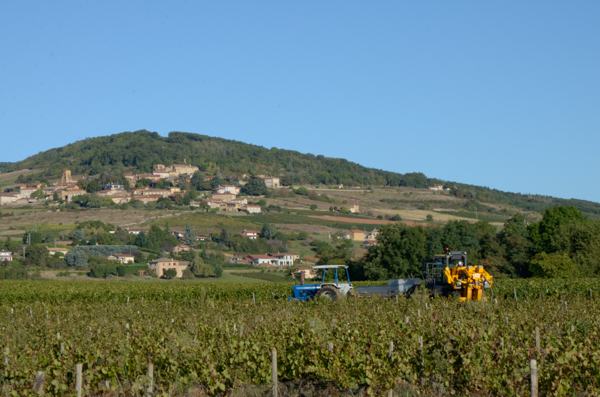
Our trip was scheduled during the vendange, the time of harvest. Some vineyards had already been harvested, some were actively being harvested and others were awaiting their time.
Not all regions allow machines for harvesting. This one does. The yellow harvesting machine straddles a row of vines and collects the grapes along with twigs & leaves. It dumps the harvested material into the trailer behind the tractor.
While we lunched in Châteauneuf-du-Pape harvesting machines regularly rumbled though town. In other locations we saw workers wearing or dragging huge baskets and picking the grapes by hand.
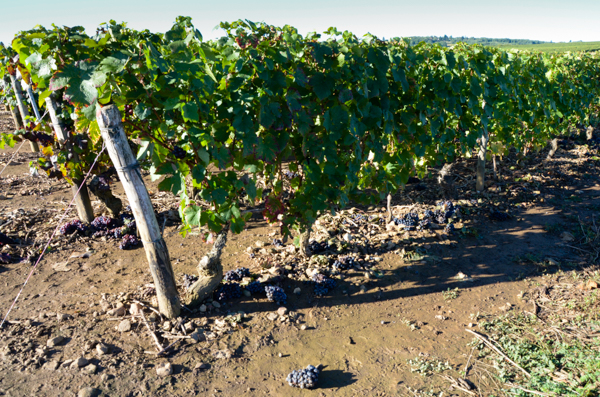
There are MANY rules in France dealing with wine production. Each region has regulations on what kinds of grapes can be used in the wines. Each region also has regulations on how much a particular winery can harvest. Prior to the harvest, workers cull and drop excess grape clusters on the ground to decompose and return nutrients to the soil.
It looks like more grapes were discarded than remained on the vines for harvest. I couldn't resist nibbling on a few.
I asked one of the winemakers if these rules created any resentment or favored large vineyards over smaller ones. He felt they enhanced the marketability of the wine, due to the resulting consistency, and protected the smaller vintners from the large ones flooding the market.
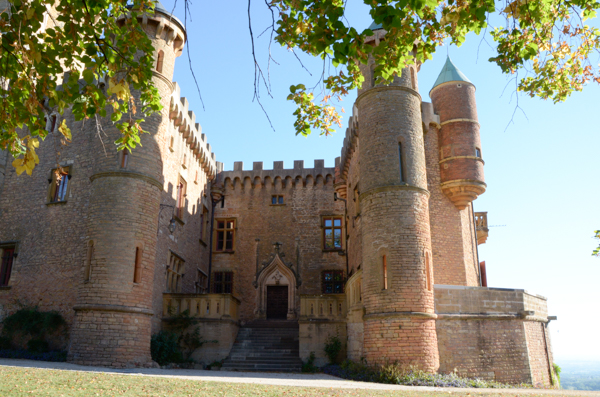
Château Montmelas has been in the same family since the 16th century. The original fortress dated from the 10th century. The Marquis de Montmelas purchased the property in the 16th century and his descendants live there today. The château descends through the female line!
By the 19th century the château had fallen into disrepair and the family consulted an architect who came up with an ornate design to restore it. It was too expensive to implement so the family decided on something more restrained. Even so, non-original touches like the crenellations were part of the restoration, not the original structure.
The elaborate surround for the entryway is also not original. It was "repurposed" from a chapel owned by the same family.
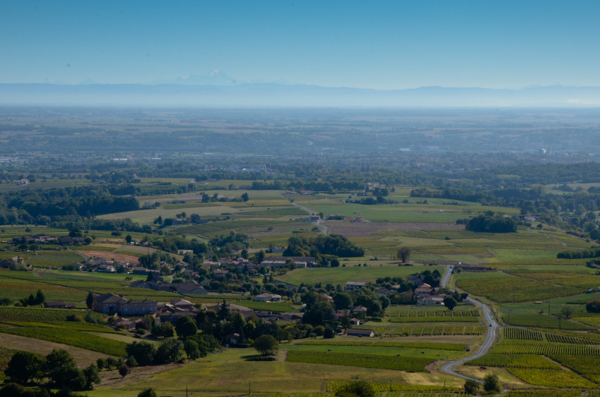
The view over the surrounding countryside was magnificent. It is barely possible to see Mont Blanc through the haze.
After our Road Scholar program, we spent several days with an old friend and his French girlfriend. Her family also once owned a Beaujolais château and winery. She told us that many years ago the region had a diversified agriculture. Now it is almost 100% vineyards. She felt the monoculture and resulting over-production, even with the restrictions mentioned above, made it more difficult for a small winery to remain viable. Her family was forced to sell their own château because it was not supporting itself. The new owners continue to make wine, but have turned the château into a B&B to supplement their income.
Montmelas also rents out part of the château as apartments and offers cottages for accommodation.
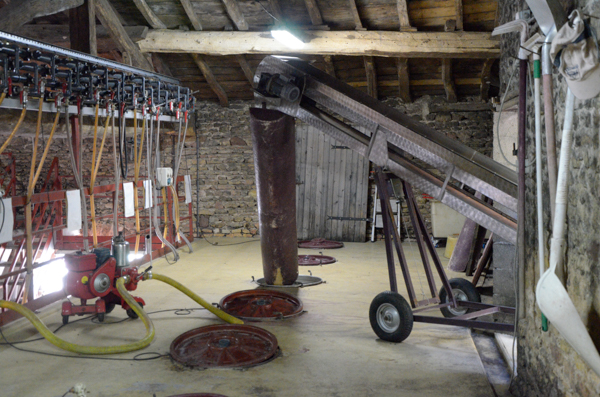
I think I've got the sequence of events right for the discussion that follows. I'd like to think that next time I'll take notes, but I know I won't!
Harvesters bring the grapes to the winery and pump them into tanks for the initial fermentation. At this winery, the tanks are built into the floor of this upper level. We were admonished to be careful of where we stepped lest we end up in a vat of grape juice!
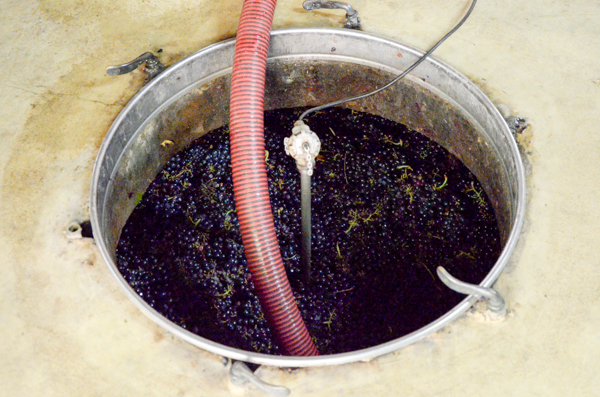
Grape clusters fill the vat.
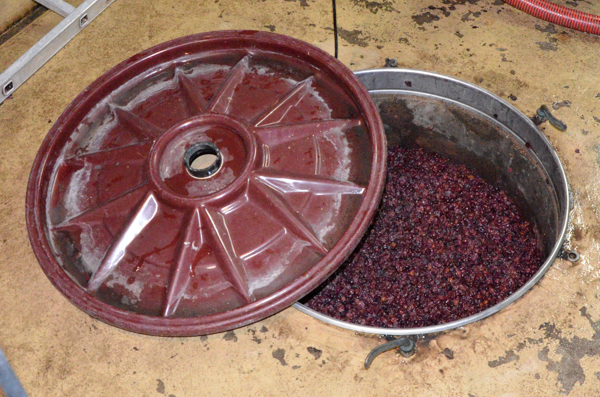
Skins rise to the top during initial fermentation.
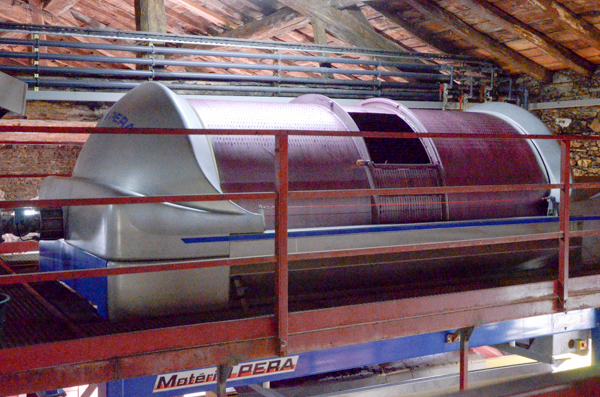
Partially fermented grapes pass through this press, which extracts the liquid through the pressure of a bladder inside the press. The remaining skins, seeds, twigs, etc., are used for compost (or in some places animal fodder to produce very contented cows!).
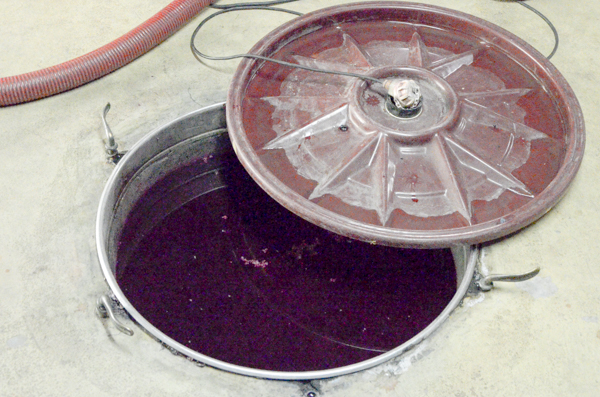
The juice returns to the tanks for additional fermentation.
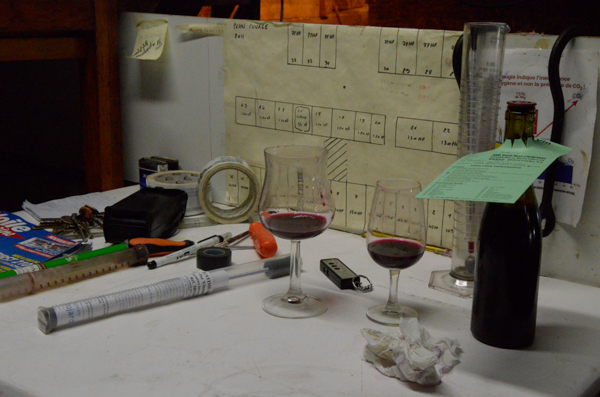
The winemaker not only tastes the proto-wine as it passes through the various stages, s/he uses various chemical measurements to determine if the wine will be within allowable specifications of acidity, alcohol levels, etc., for the particular region.
Depending on the desired result, the wine ages in stainless steel or oak barrels of varying provenance before final blending and bottling.
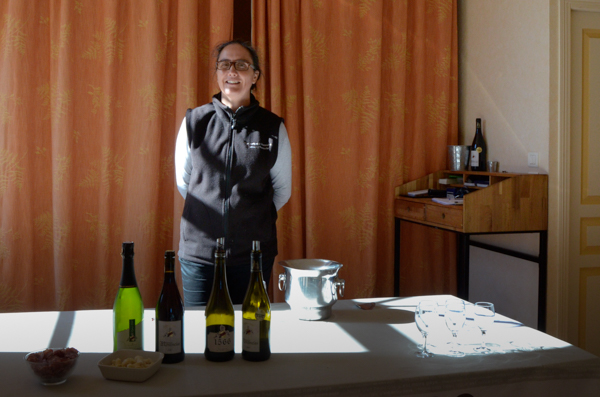
The final stop on our tour was, of course, the tasting room.
Our hostess was the wife of the château's owner and winemaker. They produce wines under their own label, Marquis de Montmelas, and the Chateau de Montmelas label.
The wine was, of course, delightful.
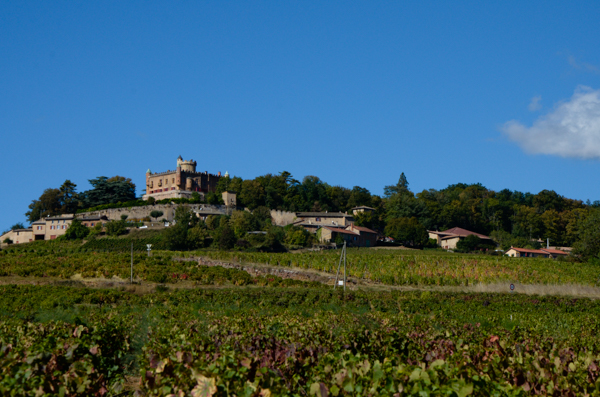
As we were leaving for our planned lunch in the village of Oingt (can't tell you how to pronounce it), we stopped to get this picture of the château in the midst of the vineyards.
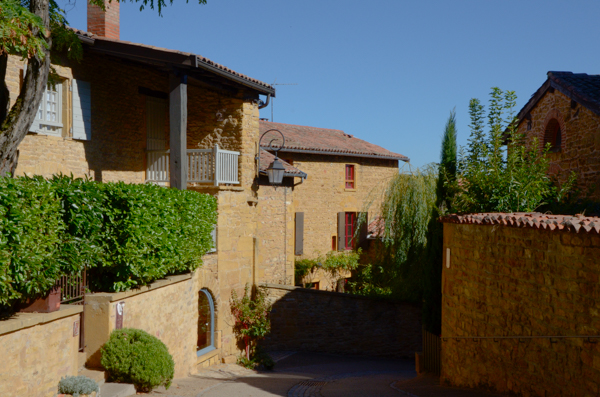
Oingt has been designated one of the most beautiful villages in France. We were glad the weather was clear so we could walk around the village after lunch unlike our previous experience at a beautiful village!
Of course the lunch was delicious as well.
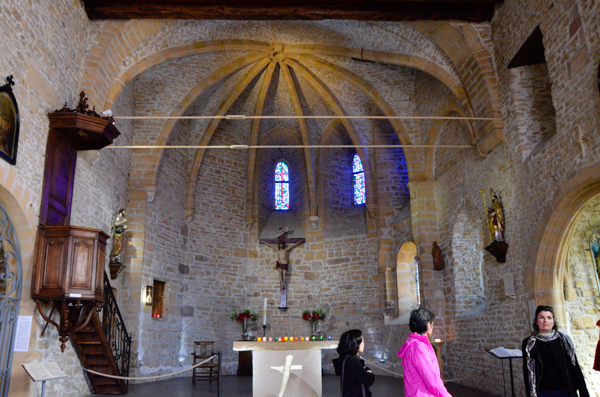
The original chapel is still an active place of worship. Over the years it has experienced some structural degradation, witness the "fallen arches" over the apse. I hope the reinforcing rods are adequate to keep it standing. I didn't hang around inside for long.
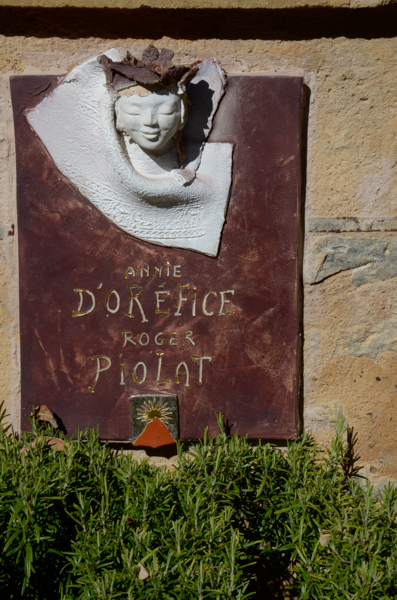
The village seems to be populated by artists. We saw many clever name plates on the houses. This is an example.
It wasn't clear if they were permanent residents or only came for the tourist season. Most artist's houses were associated with galleries.
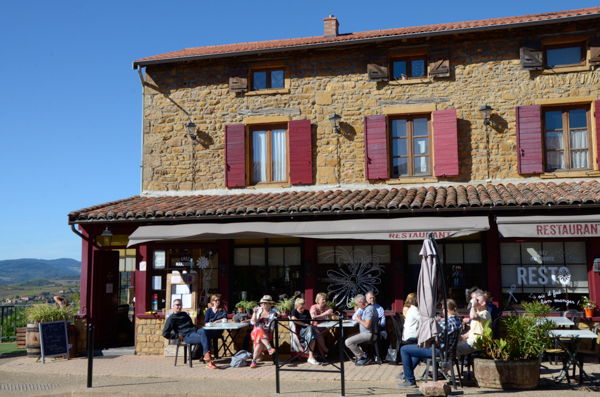
This was not the restaurant where we ate, but it was certainly popular. Although it was a chilly day, these folks look comfortable basking in the sun.
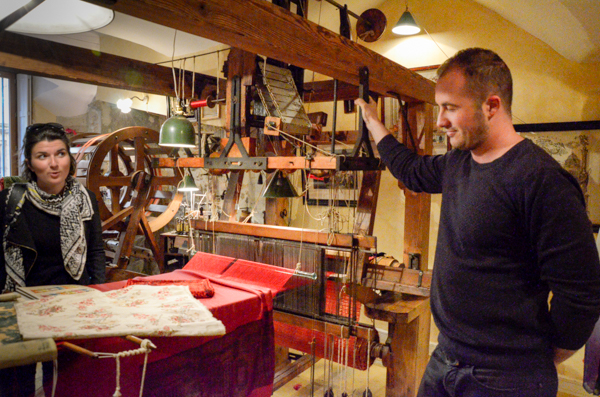
Back in Lyon, we visited the atelier of a local silk producer, Soierie St. George, where we saw this traditional loom and heard about its capabilities.
The loom is considerably smaller than ones Jim and I had seen earlier at Maison des Canuts and other textile museums. It is currently dedicated to a commission for Japanese obi cloth. The young man who described the workings to us was not yet a master weaver and therefore was not allowed to show the machine in action.
There were many beautiful scarves and other textiles offered for sale.

That evening we dined in a traditional Lyonnais bouchon: Le Garet.
I didn't get too adventurous, but the tripe appetizer was very tasty, albeit a bit vinegary for me. The pork cracklings were yummy -- reminded me of "down home." I think I had the sausage special.
Thanks to Agathe for the picture.
Click your "back" button to return to the previous page or click for our picture album.